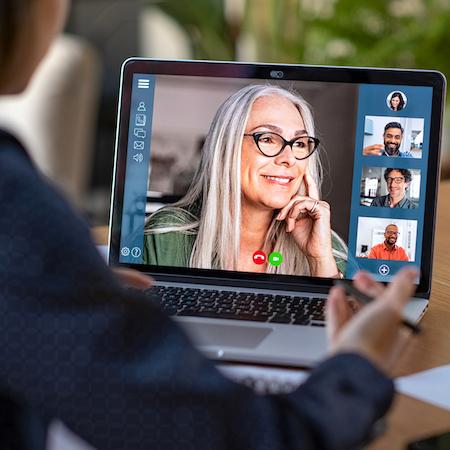
One of the characteristics of a great leader is the ability to identify potential in people. In order to build a strong and effective team, you need to fill it with the right combination of skills, abilities, and personalities.
So how do you get better at identifying the sometimes-hidden potential in your employees?
Know your people.
First and foremost, you need to know your people. You can’t just hide behind your monitor and not interact directly with your employees, and then expect to know which employees are best suited for which tasks. You need to have direct, one-on-one contact with the members of your team, whether it’s via (socially distanced) face-to-face chats or over video while people work from home.
As you get to know your people, ask them about their goals. For example, there’s no point in giving someone an “opportunity” to fill in for your management job while you’re on vacation if they hate managing people and have zero desire to ever move into a management position.
Ask them what they like and dislike most about their job. What are their struggles and challenges, both inside and outside the office? Some people love interacting with people. Others prefer sitting at their computer and writing code all day. Not everybody will always get what they want, but it’s helpful to know as you consider how to maximize the talents of your team.
While you’re at it, ask them how they prefer to be communicated with. Some individuals, particularly more introverted ones, can feel put on the spot if the boss shows up in their office with a question that they haven’t had time to consider. Others find email too formal and impersonal, preferring a casual chat in the hallway. Some people prefer to get a phone call for issues that can be dealt with quickly; others feel phone calls interrupt their workflow. Knowing which employees prefer which means of communication helps you bring out the best results in everyone.
Don’t overlook the introverts.
If you’re an extrovert, it can be difficult to connect at first with your more introverted employees. The secret is to disregard the Golden Rule. Don’t interact with them in the same way you would want to be interacted with. Follow the Platinum Rule instead and interact in the way they want to be dealt with. Instead of turning to them in a meeting and expecting an immediate answer to a question, offer multiple ways to provide feedback. For example, tell the entire group that people are welcome to submit comments at any point in the next 24 hours. If you don’t hear back, try following up in person so the employee knows you value his or her input. The more comfortable and respected introverted employees feel, the more they begin to shine, allowing you to see their true potential.
Observe your people.
One of the best ways to get to know people better is to observe them in action. Which employees read everything that comes out about your industry? Which ones have strong interpersonal connections across departments and at other companies? Which ones do other employees turn to for advice and information? Who’s a team player, volunteering for projects even when they aren’t part of the job description? Who trains and mentors more junior employees (or even interns)?
It’s obviously much easier to observe your employees and their relationships with each other in person. But you can still do so via group video chats and conference calls. Keep an eye and ear out for which employees lose the attention of their peers when they start speaking—you can tell a lot by watching people’s facial expressions and hearing commentary and silences.
Give people a chance to show you what they’re capable of.
It’s hard for someone to convince you they’re a good programmer without showing you their code and what their programs can do. Along similar lines, how can someone demonstrate they’d be effective at managing a team if they’ve never supervised anybody? You need to find ways to give people an opportunity to succeed at something new—whether it’s filling in for you while you’re on leave, leading a new project, briefing a client, or coauthoring an industry paper. Give people the chance to show what they can do. It’s the best way to determine not only whether they have the potential to do more, but also whether they need additional training before trying again.
Did I mention that you need to get to know your people?
Ultimately each of these tips leads back to the first one: you can’t identify potential in people if you don’t know them. The more you learn about their work styles and preferences, their relationships with their peers, their aspirations, and what’s going on in their lives, the better you’ll be at helping them develop to their maximum ability.
Look around you. Develop insight into your team members’ gifts. You’ll be glad you did.
All my best,
Anne

